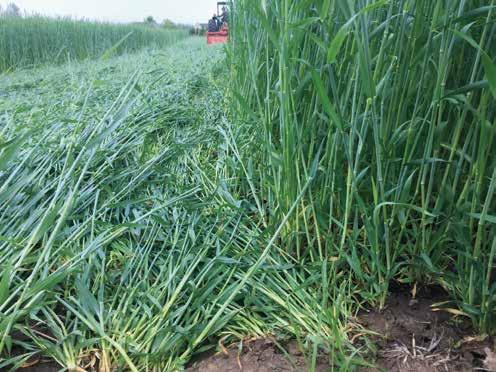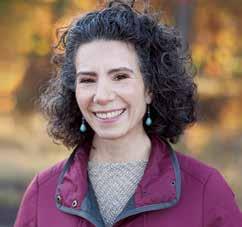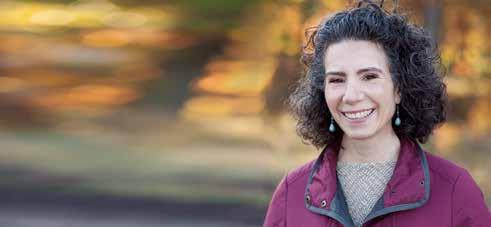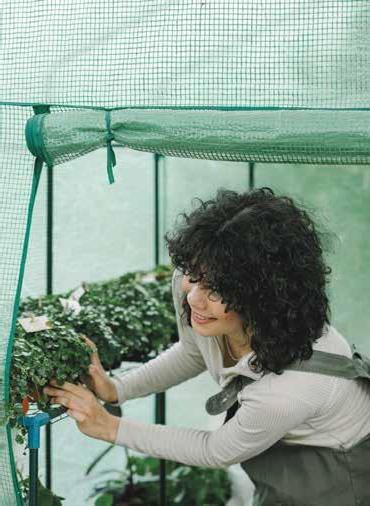
5 minute read
REGENERATIVE LABEL
Enters the Organic Food Arena
by Bob Benenson
Advertisement
For nearly a quarter century, the U.S. Department of Agriculture has provided its USDA Organic label to products that minimize chemical inputs and are not genetically modified (GMO). The green-and-white seal helped organic food to grow from a niche to the $50 billion-plus industry it is today.
Soon, consumers will start seeing another label: Regenerative Organic Certified (ROC). Advocates say it takes organic agriculture’s emphasis on soil health; promotes carbon sequestration in soil, which could reduce the risks of global climate change; and adds other Good Food Movement principles such as animal welfare and fairness to farm workers.
The Rodale Institute (RodaleInstitute.org), located in Kutztown, Pennsylvania, has led the effort to promote the concept of regenerative agriculture and began pressing for a regenerative label seven years ago. The Institute touts the ROC label as a “holistic high-bar
Photo credits Prairie Wind Family Farm
standard for agriculture certification.”
The Institute sparked the creation in 2018 of the Regenerative Organic Alliance (RegenOrganic.org), a nonprofit “made up of experts in farming, ranching, soil health, animal welfare and farmer and worker fairness.” A pilot project involving 22 farm and food companies launched in 2019 persuaded the Alliance to initiate a formal ROC program which the alliance administers.
Regenerative agriculture also captured attention from leading Good Food advocates. The 2018 Natural Products Expo West (ExpoWest.com), in Anaheim, California, had five panels on the topic, and Chicago nonprofit FamilyFarmed (FamilyFarmed.org) made regenerative agriculture the subject of the opening symposium at its Good Food EXPO.
These three pillars of the ROC label are shared widely by all Good Food Movement advocates:
n SOIL HEALTH: “Use of regenerative practices like cover crops, crop rotation and conservation tillage. Builds organic matter and promotes biodiversity with no synthetic inputs. Excludes soil-less systems.”
n ANIMAL WELFARE: “Protects the ‘five freedoms,’ grass-fed and pasture-raised, no concentrated animal feeding operations (CAFO, aka factory farms) or extensive transport, suitable shelter.”
n SOCIAL FAIRNESS: “Ensures fair payments and living wages for farmers and farmworkers, safe working conditions, capacity building and freedom of association.”
LONG GROWING SEASON
It will, however, take time before we will know whether regenerative agriculture emerges as “Organic Plus” or becomes an adjunct to the USDA Organic label (as well as another recently launched label, Real Organic, administered by the Real Organic Project [RealOrganicProject.org], which like ROC, is only applied to foods that originate in soil, excluding hydroponic and aeroponic production).
The ROC label is just now being rolled out. Alexandre Family Farm (Alexandre FamilyFarm.com), an eco-dairy farm in Crescent City, California, that was part of the pilot project, launched its official ROC label on February 1.
The Illinois Stewardship Alliance (ISA; IlStewards.org) is a nonprofit advocacy group with this mission: to find, connect, train and amplify the leadership of farmers and eaters that use their choices and their voices to shape a more just and regenerative local food and farm system. The Alliance is a founding member of the Regenerate Illinois (RegenerateIllinois.org) network of farmers, nonprofits, businesses and researchers.
ISA Executive Director Liz Moran Stelk says, “Labels like ROC are essential to re-

ward farmers who are doing the right thing and for consumers who can afford it to find food they trust.” She notes, “But it can’t be a diversion from the fundamental policy changes we need in order for those protections to become industry-wide standards. Food that’s healthy, affordable and reflects our values shouldn’t be relegated to the specialty aisle—it should be the whole store.”
Many Organic-certified farmers in the Chicago foodshed are taking a wait-and-see approach. One of these is Jen Miller, who with husband Jeff Miller, owns Prairie Wind Family Farm (PrairieWindFamilyFarm.com) at the Prairie Crossing conservation community in north suburban Grayslake.
Prairie Wind is a 40-acre farm with 12 to 15 acres in production that according to Miller grow 125 varieties of vegetables, as well as cover crops designed to the “particular nutrient needs of each field’s soil.” The farm is certified for both the USDA Organic and Real Organic labels.
Miller, who also serves as managing director of the Liberty Prairie Foundation (LibertyPrairie.org), says, “We use regenerative farming techniques to improve soil health and life, building thriving ecosystems and producing nutritious food in ways that are sustainable for those who produce the food and eat the food.” She advises, “We consider ourselves to be ecological or conservation-minded farmers. We strive to give more than we take, and we mean that in terms of stewardship of our land, care for our community, care for our animals and sharing knowledge with other farmers.”
About whether Prairie Wind will pursue the ROC label, she says, “We’d like to know more about the certification and its implementation on farms like ours first to provide a better perspective.”
Harold Wilken has spearheaded the transition of thousands of acres of east-central Illinois to organic grain growing, and his decades-long dedication to soil health at his Janie’s Farm (JaniesFarm.com), in Danforth, gained him regard as a model for regenerative agriculture. Wilken, who also operates Janie’s Mill (JaniesMill.com), in Ashkum, Illinois, which produces high-quality USDA Organic flours for the retail market, sees “organic” and “regenerative” as virtually synonymous when it comes to the crucial issue of soil health.
“One of the biggest benefits of going organic is seeing the change in the land,” Wilken says. “We end up transitioning some new land every year for new landowners, and it still never ceases to amaze me how we take the land from kind of a barren soil with no life in it and make it into organic.”
Whether the ROC label ultimately supplements or supersedes the USDA Organic label, it is another strong indication that sustainable agriculture is a rising tide.



Bob Benenson is a longtime Good Food writer and advocate who lives in Chicago. Contact him at Bob.Benenson@gmail.com.
Life Changes can be Bumpy, even Turbulent!
You can consciously choose how you want to come out the other side. Call me. Let’s turn your stress to strength so you can move through in a more confident, kinder, and joyful way! Coaching and De-stressing – so YOU can Change Your World! 262-745-8362 • www.SarahDKarnes.com






